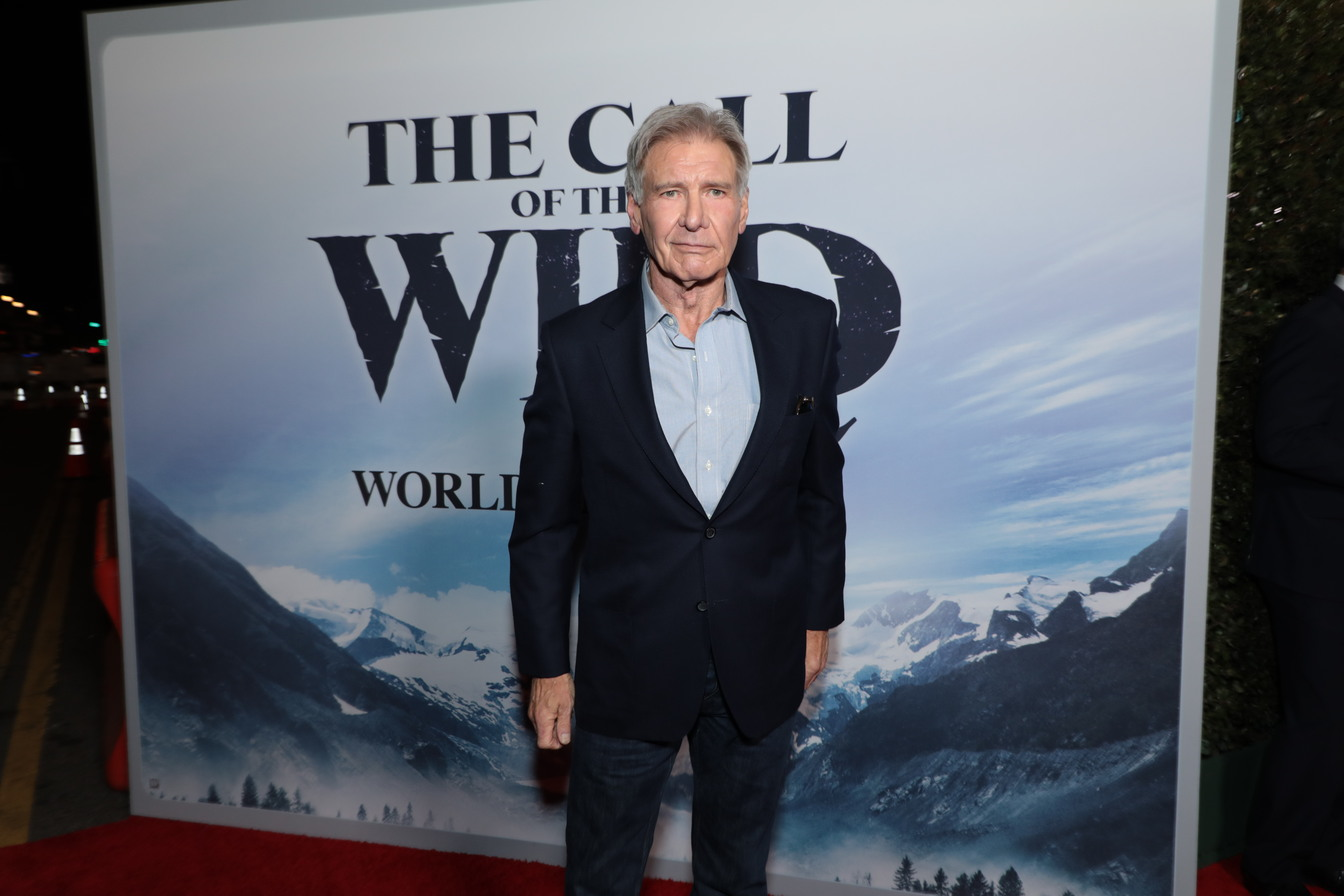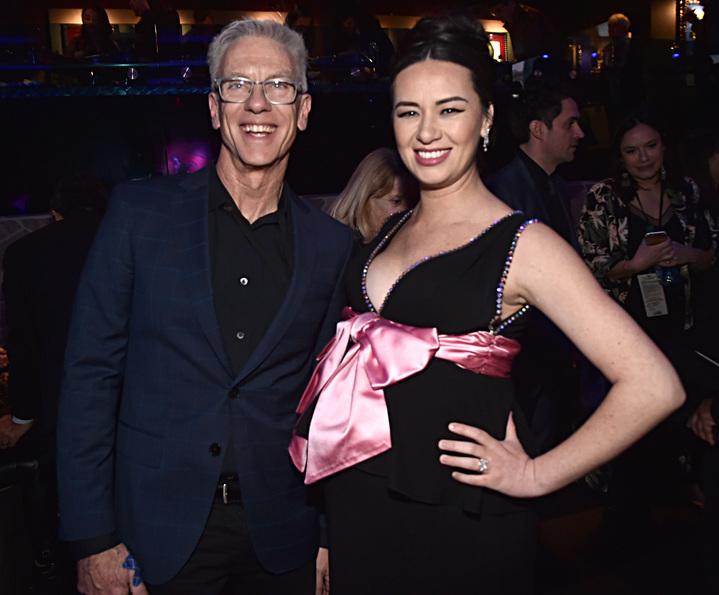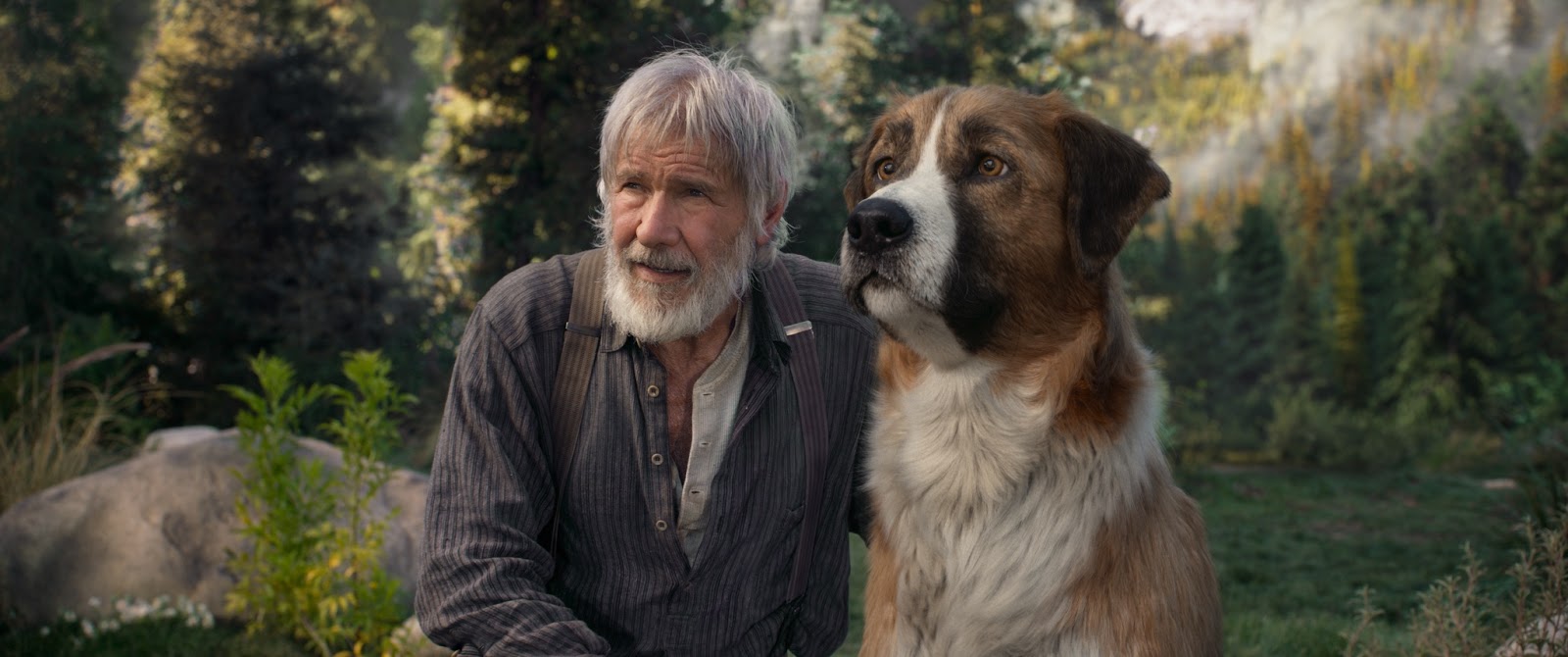20th Century Studios’ The Call of the Wild opens in theaters nationwide on February 22nd. The film tells the story of Buck, a lazy mischievous dog who is kidnapped from his California home and sold the Yukon where sled-pulling dogs are in high demand amidst the goldrush. In the film, Buck may be a completely computer generated character, but Director Chris Sanders told us that doesn’t mean he isn’t real at a press junket to promote the film. “He is real, he is real,” Sanders promised, pulling out his phone to show pictorial evidence. “I actually live with him.”
“When we first started the film, we cast every dog and we scanned every dog as a shortcut to building them,” Sanders explained. “But the only dog that we were struggling with was the lead, Buck. And he’s a very specific mix of two breeds as described by Jack London in the book. We were trying to build him from scratch and we were struggling with it. We were also trying to make him look like a Bernese Mountain Dog and it was October, I was on set and it was beginning to look like that dog was just never going to work. I was like, we’ll figure it out later. Then my wife was on PetFinder and she said ‘Oh my gosh, I just found a dog that is an exact mix of the two breeds that is described in the book and he’s in a shelter in Kansas, found as a stray wandering the streets and they named him Buckley.’ So she said ‘I’m going to drive out.’ She drove two days to Kansas and she met him, she bought him for $25 because he was marked down, he was on sale. So she drove back, she walked onto set with him and everyone said if that’s the same dog from the story, let’s just make him that dog. So we took him down to Gentle Giant and we scanned him. That’s him. I live with him now.”
The production found a lead dog for the film and Chris Sanders found a new family member. “He’s so sweet, he’s a big baby,” he shared. “If you leave for too long, he needs to work out his feelings.” There was, however, one aspect of the real Buckley that had to be modified in the computer to create Buck. “The only thing we had to change is that when we scanned him, his tail was kind of very sparse and then as he gained some weight, because he’s about twenty-five pounds overweight. As he gained weight, his tale started to get more and more fluff on him and I had to go back to the animators and ask if they could amend the model to make his tail bigger. His tale ended up being just huge so it's accurate now.”
“I’ve had dogs all my life, I enjoy being around dogs,” screen legend Harrison Ford shared while talking about filming his scenes with Buck. “They give me comfort, they give me pleasure, and we have a good time together. We had no dog in the movie, but we had a wonderful actor and former Cirque du Soleil gymnast who was a presence, an emotional presence for me to relate to. I mean, the idea was to have an eyeline. That’s how simple it was, because everyone in the scene wants to be looking in the same place they’re supposed to be looking. And he could move like a dog, that was the gymnast part of it. So he was an aid to animation because he would do the scene and then they would animate the dog over him and replace him. But for me… I mean, the job of an actor is to pretend. Pretend that there are real circumstances, to feel, to be able to generate the behaviors of a feeling person. And so to have him there to be able to scratch behind the ear, to rub his shoulders, those seemed a little weird at first, but I got over it.”
Cara Gee plays Françoise, an indiginous woman who runs a mail dog sled team with her husband Perrault. “Terry Notary played Buck and he did the Planet of the Apes films,” Cara explained about her “Canine” costar. “When he runs on all fours, if you see it in your peripheral vision you’d think it was a dog… When I got the part, I was like ‘I’m going to have to look this grown man in the face and pretend he’s a dog.’ But he was so committed and I could look in his eyes and believe what he was doing, believe in him. So all of that soulfulness in the film that we feel from Buck is because of Terry’s acting ability. He’s really special. You can see why he works all the time.”
“I’m always looking for a good part,” Harrison Ford shared when talking about why he chose to be in The Call of the Wild. “I’m always looking for an opportunity to bring a story to an audience and to have them find value in it. One of the things I think that we get from film that’s really important is the experience of being present in the context of a story and not knowing how you’re going to feel about it. But then having an opportunity to get some emotional exercise out of it. To feel our common humanity. And that’s why I really encourage people to see this kind of movie in a theater with strangers in the dark… And it has such scope and scale. Even though a lot of that is generated by computer graphics. It’s done so beautifully, so sensitively that I think it’s really a remarkable achievement.
One of the film’s most epic scenes involves an avalanche that Buck has to lead his team through. “I storyboarded that sequence,” Chris Sanders shared. My whole thing is I’m a board artist, that’s how I started my career in animation. I storyboard everything I do so I storyboarded this whole thing with an avalanche and stuff and I couldn’t have imagined that they could realize it that believably. The amount of time you spend just talking about something like that is pretty amazing because you’re talking about the different angles and where will the sled be in relation to it and just discuss and discuss and discuss. And pretty soon, they’ve got a little model built and you’re looking at preliminary… They call it pre vis, they can render very quickly almost a video game version of it, kind of a simple version to look at. And as they were developing it I started getting so excited about how big that could be.”
Cara Gee was on the sled in the avalanche sequence. “Well, a lot of that was done in animation afterward… we shot that in a studio. So Omar [Sy] and I, the man who plays Perrault, we were sitting on a sled in the middle of a room with nothing around us and we had to imagine that we were looking up but we were looking at nothing. So we had to just act that and then the director would say ‘Okay, now you’re going around a corner.’ Just all imagination for us, so to get to watch it I was like anyone else in the audience watching it for the first time. ‘Oh, that’s what that looks like.’ It was very challenging and very cool.”
For Chris Sanders, watching the actors bring these imaginary moments to life was a treat. “I guess that’s the whole thing about being an actor is there’s this avalanche and you can tell them about it. In the case of the avalanche, there’s no way that you can describe the scale of it, so they just have to do that themselves and fill that in. They did a great job.”
Harrison Ford is known for being a rugged nature explorer in his freetime and talked about the wild aspect of the film. “It’s either in the wild or Santa Clarita,” he joked about the film’s Southern California shoot. “It’s forty-five minutes away through heavy traffic. It worked really well. I mean, we built practical sets, which was of great value to the actors and to the telling of the story for the camera to capture real actors dealing with a real place and real things. But then, because we weren’t in the Yukon, we could then add the Yukon above the first story, which was the practical set. It turned out to give us artistic opportunities that we would have had a very hard time getting that would’ve been more costly, less efficient. I was very pleased with how it turned out.”
Chris Sanders came to The Call of the Wild from an animation background, having created, directed, and starred in Disney’s Lilo & Stitch. With so much of the film done in animation, it almost plays like a live-action/animation hybrid ala Who Framed Roger Rabbit. “With the latest technology, Buck and his dogs and these wolves are animated characters and I think they have that kind of charm and they have that ability to reach an audience,” Sanders shared. “I think that was one of the most exciting things about this was the story is a fictional story. Jack London did meet Buck, there’s a photograph in our Fox Archives that is supposedly Buck sitting in front of a cabin and so Jack London knew this dog, but otherwise it’s complete fiction. So it’s a bit of a fable that we’re bringing to life, which is one of the reasons I thought it was exciting that we did it in this way.”
But just because a lot of the backgrounds and characters were animated doesn’t mean the process was easy for the actors. “I actually became a certified scuba diver to do that scene,” Cara Gee explained about a sequence where her character falls through the ice and almost drowns. “I worked one-on-one with a man named Casey, who is a former US Navy Seal, and a divemaster. And it’s so rare to actually do something that is legitimately kind of scary. I was not a swimmer. I had never opened my eyes underwater before this, I wear contacts… I would get set up underwater with a regulator in my mouth and they would call action and I’d have to ditch the regulator, but we would get set and placed underwater.” In the film, it looks like they’re out on the ice in the Alaskan wilderness, but the sequence was actually filmed on a hot day in a shipping container full of water in Santa Clarita, CA. “It was so hot out, I had to really draw on my Canadian roots.”
Based on the classic Jack London novel, Harrison Ford plays a character with an expanded role just for the film. “We took some liberties and one of the liberties that we took I think brought something that’s important to the story and that is to establish a kind of parallel between what was going on in Buck’s life and what was happening in Thornton’s life. In the book, Thornton arrives as a kind of deus ex machina and solves the problems, but we don’t know anything about him. We don’t know where he’s coming from, we don’t know what motivates him really. And so we constructed a story which gave us the opportunity to see the parallel of Buck finding his destiny, if you will, and Thornton resolving his issues. As Buck was gaining the confidence and the courage to face his natural self, Thornton was finding the courage to go back and face a life that he had run away from. I thought that was an important emotional element.”
“I think it gives people something that they can hold onto and be inspired by and also talk about,” Chris Sanders added, summing up why the story is so special to him. “In my own life, there have been surprises and things that are unexpected and you have to navigate them, you’re compelled to. I think finding ways to pick yourself up after you’ve fallen down is something that nobody really talks to you much about. I think when you’re a kid, you see a lot of stories about people who believe in themselves and find something that they want or accomplish something and I think one of the things you don’t realize is believing in yourself means picking yourself up after things go terribly wrong. And that’s the thing that I think is in this story that’s so great.”
You can see The Call of the Wild in theaters starting February 21st from 20th Century Studios.





